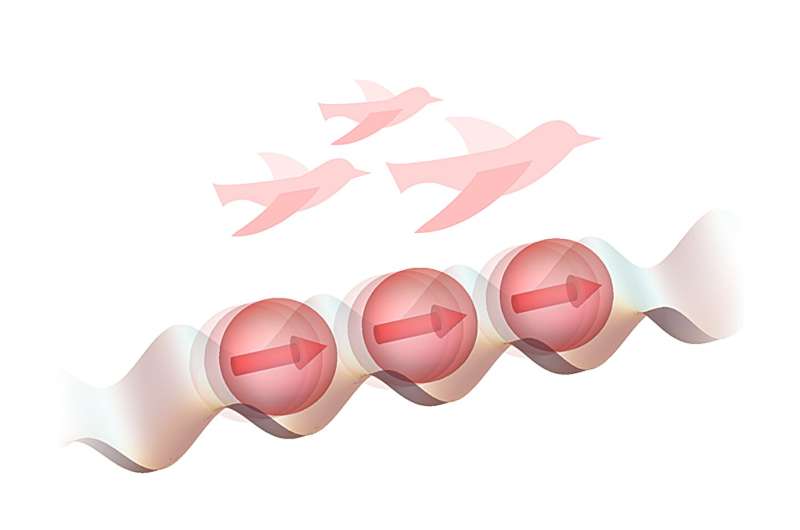Schematic representation of activity-induced ferromagnetism in quantum active materials. Here, moving atoms with spin exhibit ferromagnetic order (i.e., line up in one direction), like the flock of birds described above. Image source: Takasan et al. 2024
Researchers Kazuaki Takasan and Kyogo Kawaguchi of the University of Tokyo and Kyosuke Adachi of RIKEN, Japan, have shown that ferromagnetism (an ordered state of atoms) can be induced by increasing particle mobility and that repulsive forces between atoms are sufficient to maintain it.
This discovery not only extends the concept of active matter to quantum systems, but also aids the development of new technologies that rely on particle magnetism, such as magnetic memory and quantum computing.Research results published in journal physical review research.
Flocks of birds, swarming bacteria, the flow of cells. These are all examples of active matter, which is the state of self-organization of an individual entity (such as a bird, bacterium, or cell). These substances change from a disordered state to an ordered state in what is called a “phase transition.” Therefore, they can be moved together in an organized manner without external controllers.
“Previous research has shown that the concept of active matter can be applied to a wide range of scales from nanometers (biomolecules) to meters (animals),” said first author Gao Shan. “However, it is currently unclear whether the physics of active matter can be effectively applied in the quantum realm. We hope to fill this gap.”
To fill this gap, researchers need to demonstrate a possible mechanism that can induce and maintain ordered states in quantum systems. This is a collaborative effort between physics and biophysics. The researchers took inspiration from the phenomenon of avian aggregation, because due to the activity of each substance, it is easier to achieve an ordered state than with other types of active substances.
They created a theoretical model in which the atoms essentially mimic the behavior of birds. In this model, as they increase the atoms’ mobility, repulsive forces between the atoms rearrange them into an ordered state called ferromagnetism. In the ferromagnetic state, the spins and angular momentum of subatomic particles and atomic nuclei are aligned in one direction, just like a flock of birds facing the same direction while flying.
“What was surprising at first was that we found that this ordering could occur without complex interactions between agents in the quantum model,” Gao Shan reflects on the discovery. “This is different from what was expected based on biophysical models.”
The researchers took a multifaceted approach to ensure their findings were not a fluke. Fortunately, the results of computer simulations, mean field theory, particle statistical theory, and mathematical proofs based on linear algebra are consistent. This enhances the reliability of their findings, which is the first step in a new field of research.
“The extension of active matter into the quantum world has only begun recently, and many aspects are still open,” Takayama said. “We hope to further develop the theory of quantum active matter and reveal its universal properties.”
More information:
Activity-induced ferromagnetism in one-dimensional quantum many-body systems, physical review research (2024).exist arXiv:DOI:10.48550/arxiv.2308.04382
Provided by the University of Tokyo
citation: Study demonstrates new mechanism for order formation in quantum systems (2024, April 26), Retrieved April 26, 2024, from https://phys.org/news/2024-04-mechanism-formation-quantum. html
This document is protected by copyright. No part may be reproduced without written permission except in the interests of fair dealing for private study or research purposes. Content is for reference only.
#Study #demonstrates #mechanism #order #formation #quantum #systems
Image Source : phys.org
